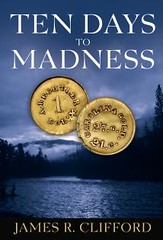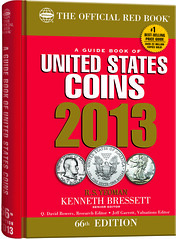
About UsThe Numismatic Bibliomania Society is a non-profit organization promoting numismatic literature. For more information please see our web site at coinbooks.org SubscriptionsThose wishing to become new E-Sylum subscribers (or wishing to Unsubscribe) can go to the following web page link MembershipThere is a membership application available on the web site Membership Application To join, print the application and return it with your check to the address printed on the application. Membership is only $15 to addresses in the U.S., $20 for First Class mail, and $25 elsewhere. For those without web access, write to: David M. Sundman, Secretary/TreasurerNumismatic Bibliomania
Society AsylumFor Asylum mailing address changes and other membership questions, contact David at this email address: dsundman@LittletonCoin.com SubmissionsTo submit items for publication in The E-Sylum, just Reply to this message, or write to the Editor at this address: whomren@coinlibrary.com
BUY THE BOOK BEFORE THE COINYou won't regret it! |
- WAYNE'S WORDS: THE E-SYLUM APRIL 29, 2012
- KOLBE & FANNING BUY OR BID SALE CATALOG UPDATED
- NEW BOOK: HISTORY OF COLLECTING CONFEDERATE STATES PAPER MONEY
- NEW BOOK: FELICITAS: ESSAYS IN NUMISMATICS IN HONOUR OF JOE CRIBB
- NEW BOOK: THE COMPLETE COINAGE OF FLORIAN
- NEW BOOK: WORLD NOTGELD 1914-1947, 2ND EDITION
- NEW BOOK: TEN DAYS TO MADNESS
- BOOK REVIEW: THE ESSENTIAL GUIDE TO INVESTING IN PRECIOUS METALS
- DEISHER TO RETIRE AS EDITOR OF COIN WORLD
- ON FINDING ERRORS IN NUMISMATIC PUBLICATIONS
- THE MONEYER OF ST. GEORGES DE BOSCHERVILLE
- MORE ON LONGINES SYMPHONETTE MEDALS
- BOSCO ON THE SCHULMAN MEDALLIC HISTORY OF MONEY AND BANKING
- QUERY: FRANKLIN MINT PHILIPPINE ISSUES
- DICK JOHNSON'S ADVICE FOR FRANKLIN MINT CUSTOMERS
- NOTES FROM E-SYLUM READERS: APRIL 29, 2012
- QUERY: U.S. MINT MEDAL IMAGES SOUGHT
- QUERY: DID LOUISE SPARROW SCULPT THIS WASHINGTON PLAQUE?
- AN ALASKA PURCHASE TREASURY WARRANT
- QUERY: SCOTTISH AGRICULTURAL MEDAL INFORMATION SOUGHT
- THE BRONX COIN CLUB
- NANOTECHNOLOGY FOR BANKNOTE SECURITY
- MORE ON CANADA'S NEW COIN SECURITY TECHNOLOGY
- ARTICLE: SHOULD BRITAIN ELIMINATE THE PENNY?
- ZIMBABWE'S SMALL CHANGE PROBLEM
- GALLIPOLI SERVICE MEDALS AT THE MARYBOROUGH MILITARY MUSEUM
- THE GOZNAK MOSCOW MINT
- EVERYDAY ART: THE BANKNOTE
- THE FUTURE OF READING
- FEATURED WEB SITE: THE ULTIMATE STATE OF TÆDIVM
WAYNE'S WORDS: THE E-SYLUM APRIL 29, 2012

New subscribers this week include Ray Lockwood, courtesy of Bob Fritsch, Scot Hurley, Michael P. Schmeyer, Richard Knapp, Michael Sanders and Michael Labosier. Welcome aboard! We have 1,547 email subscribers, plus 173 followers on Facebook.
What a great time for numismatic bibliophiles! This week's issue brings word of FIVE new publications and an update on sales in Kolbe & Fanning's current Buy or Bid Sale. Other topics include reporting errors in numismatic publications, the Schulman history of money and banking medals, the Bronx Coin Club and the latest high-tech security measures for coins and banknotes.
To learn more about
Shakespeare's Shove-Groat Shilling, the Moneyer of St. Georges de Boscherville, a planarizing layer of polydimethylsiloxane and the Private Pattern Antarctic Coins of F. Zinkann, esq. , read on.
Have a great week, everyone!
KOLBE & FANNING BUY OR BID SALE CATALOG UPDATED
 Kolbe & Fanning's first online-only "Buy or Bid Sale" is off to a roaring start, with about a third of the lots either sold or bid upon. As most of the participants so far have been taking advantage of the low prices and buying books directly, we thought it would be convenient for our customers if we indicated which lots are no longer available. A new PDF catalogue has been posted online, with sold lots marked as such throughout. Don't delay: there is still plenty of good material available, but sales have been brisk! The updated catalogue is available from the Kolbe & Fanning website at
www.numislit.com
.
Kolbe & Fanning's first online-only "Buy or Bid Sale" is off to a roaring start, with about a third of the lots either sold or bid upon. As most of the participants so far have been taking advantage of the low prices and buying books directly, we thought it would be convenient for our customers if we indicated which lots are no longer available. A new PDF catalogue has been posted online, with sold lots marked as such throughout. Don't delay: there is still plenty of good material available, but sales have been brisk! The updated catalogue is available from the Kolbe & Fanning website at
www.numislit.com
.
NEW BOOK: HISTORY OF COLLECTING CONFEDERATE STATES PAPER MONEY
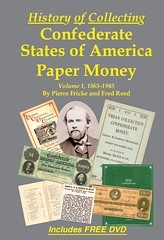 Pierre Fricke and Fred Reed announce the publication of History of Collecting - Confederate States of America Paper Money Volume 1, 1865 to 1945. With 340 pages of well-illustrated stories and history, this book is a must for anyone interested in collecting Confederate paper money, Southern history, or coin and paper money collecting.
Pierre Fricke and Fred Reed announce the publication of History of Collecting - Confederate States of America Paper Money Volume 1, 1865 to 1945. With 340 pages of well-illustrated stories and history, this book is a must for anyone interested in collecting Confederate paper money, Southern history, or coin and paper money collecting.
Fricke and Reed begin with a brief history of the Confederate financing during the Civil War and proceed through the decades highlighting the major and typical books, periodicals, price guides, auctions, collectors and dealers of the various eras since 1865. Appendices feature Smithsonian curator Richard Doty on the history of the famous Richmond hoard of Confederate money captured by the Union at the end of the War and an easy-to-use pictorial guide to getting started collecting the types of Confederate money.
Additional coverage featured on a DVD includes research materials, collecting aids such as checklists, condition census of rare Confederate notes (updated from the 2005 "Big Book"), and an extended presentation of the material in this and forth-coming Volume 2 (1945-2015).
"I salute Pierre and Fred for producing a book having a unique theme about a long-neglected, but very important
and interesting aspect of collecting Confederate currency. The novice, the seasoned collector, or astute investor
should find information in this book invaluable…The book is well researched and gives a wonderful history of
various collections, the collectors who investigated the mysteries of many of the notes, and discussion and
emphasis on early catalogs and sales. As such, it should interest anyone having an appreciation for the history
of collecting, and desire to collect Confederate currency. In addition, it may also give valuable insight as to
what the future of collecting may be."
Marvin Ashmore, longtime collector of Confederate and Southern items.
What You Will Learn and Find
• Easy-to-use picture guide to types of Confederate paper money
• Introduction to Confederate finance
• Who were the major collectors, dealers, auction houses of 1865 - 1945
• What did major and typical collections look like
• What were the major books, price lists and periodicals of the period
• Price history of types and varieties of Confederate money
• Research materials including old auction catalogs and lists
• Checklists to guide the collector
• Numerous articles
• Presentation of the History of Collecting Confederate Money 1865-date
• Condition census of rare Confederate notes; Montgomery, T-27, T-35 census
Available By June 10, 2012. Price $50 ppd. US delivery.
Accepting orders now... See: www.csaquotes.com/csabooks.html
NEW BOOK: FELICITAS: ESSAYS IN NUMISMATICS IN HONOUR OF JOE CRIBB
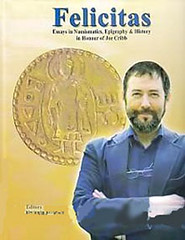 Joe has had a 'hand' in a variety of numismatic activities. Starting with Chinese coins, Joe moved to many other
themes and subjects within the broader range of 'Oriental' numismatics and history, making invaluable
contributions to highly controversial subject areas, like the inception of coinage in the Indian subcontinent and
the chronological questions facing complex coinages in Central Asia. Significantly, Joe Cribb's academic interests
not just centre around the broad theme of 'Money', which encompasses numismatics, but also go much beyond.
Joe has had a 'hand' in a variety of numismatic activities. Starting with Chinese coins, Joe moved to many other
themes and subjects within the broader range of 'Oriental' numismatics and history, making invaluable
contributions to highly controversial subject areas, like the inception of coinage in the Indian subcontinent and
the chronological questions facing complex coinages in Central Asia. Significantly, Joe Cribb's academic interests
not just centre around the broad theme of 'Money', which encompasses numismatics, but also go much beyond.
Covering a vast time and space, the essays here deal with the most ancient of the sub-continental coinages as well as those that deal with the most modern and conventional forms of money, like banknotes. Among other specificities, the essays explore socio-historical themes associated with coinage, study iconography through coins, examine royal as well as religious coins icons seen on Kushan coins, offer fresh interpretation of the 'Lion Pillar' inscription from Mathura, and highlight the role/utility of coins in historical reconstruction from a conceptual perspective, analyzing the deployment of coins to underline archaeological and historical periods. Several other themes examined here include minting technology in Mughal India, pagoda coins of South East India, Kuninda and Kota coins of the Punjab, or how coins were used as a tool of diplomacy in the colonial India.
To order the book at Vedams Books, see:
Felicitas : Essays in Numismatics Epigraphy and History in Honour of Joe Cribb
(www.vedamsbooks.com/no107527/felicitas-essays-numismatics
-epigraphy-history-honour-joe-cribb-edited-by-shailendra
-bhandare-sanjay-garg)
NEW BOOK: THE COMPLETE COINAGE OF FLORIAN
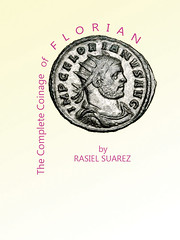 The Complete Coinage of Florian is a new ebook that catalogs the coins of Roman emperor Florian. Although he had only a brief reign in the year 276 nevertheless the mints active at the time spawned a remarkable output of currency.
The Complete Coinage of Florian is a new ebook that catalogs the coins of Roman emperor Florian. Although he had only a brief reign in the year 276 nevertheless the mints active at the time spawned a remarkable output of currency.
Based on 2010's acclaimed second edition of the Encyclopedia of Roman Imperial Coins (ERIC II), this work now takes an exhaustive survey to list nearly 1,000 varieties and thus gives a much-needed update to a period that had been poorly documented in older reference works. Available for download as PDF from dirtyoldcoins.com, eBook on lulu.com and MOBI for Kindle on Amazon for $10. ISBN 978-0976466451
To order, see: www.dirtyoldbooks.com/The-Complete-Coinage-of-Florian.html
NEW BOOK: WORLD NOTGELD 1914-1947, 2ND EDITION
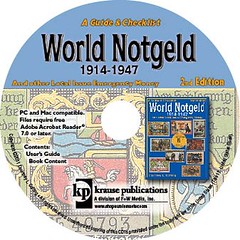 A Guide and Checklist to World Notgeld 1914-1947, 2nd edition, is now available in CD form from Krause Publications. The reference by Courtney L. Coffing contains the largest collection of photographed Notgeld in a worldwide reference.
A Guide and Checklist to World Notgeld 1914-1947, 2nd edition, is now available in CD form from Krause Publications. The reference by Courtney L. Coffing contains the largest collection of photographed Notgeld in a worldwide reference.
The CD features:
-13,000 entries listed by both city and country
-More than 1,400 photos
--Rarity grades for all listings and photographed notes
--Listings encompassing 60 countries
--Coverage of metal, paper and cloth materials
--A step-by-step User's Guide
Compatible with Macs or PCs, the reference allows image enlargement of up to 400%, and the ability to print single pages.
For more information visit:
www.shopnumismaster.com/product/a-guide-and-checklist
-world-notgeld-1914-1947-w8614
NEW BOOK: TEN DAYS TO MADNESS
My latest novel Ten Days To Madness is out and it features the Bechtler territorial gold coins minted in North Carolina during mid-1800's.
Only Charlie Parker knows that his image as a successful, well-respected family man is a complete lie and with his life collapsing around him he travels to the secluded mountain house that has been owned by his family for generations. Hidden in his father's library Charlie unearths a bizarre diary that claims a rogue tribe of Cherokee Indians stole a fortune in gold coins before the Civil War and hid the treasure in an ancient burial cave in a remote part of the Appalachian Mountains.
Compelled by forces he doesn't understand, Charlie embarks upon a self-destructive march to uncover the truth as he discovers his family's darkest secrets. His ancestor's heinous crimes force Charlie to face the demons unleashed by his family from so long ago and he is haunted by nightmares, tormented by a strange man claiming ownership of the diary and terrorized by Cherokee spirits known in Indian mythology as The Nunnehi. The horrifying encounters send Charlie spiraling into an alcohol fueled frenzy to find the Cherokee gold, no matter the cost.
Does the gold exist? Are the bizarre events really happening to Charlie or has his mind finally collapsed under the pressures of mental illness, alcohol abuse and a failed business? Those questions linger in the reader's mind until the final page as Charlie battles internal demons and external monsters to discover the truth about himself, and the legend of the Cherokee Gold.
To read the complete article, see: www.jrclifford.com
BOOK REVIEW: THE ESSENTIAL GUIDE TO INVESTING IN PRECIOUS METALS
 The Essential Guide To Investing in Precious Metals, 2011, David L. Ganz, APMEX, Published by KP – F+W Media,
The Essential Guide To Investing in Precious Metals, 2011, David L. Ganz, APMEX, Published by KP – F+W Media,
Reviewed by John and Nancy Wilson
The Essential Guide to Investing in Precious Metals was published by KP F+W Media in late 2011 and released in January, 2012 by noted numismatist, author, past ANA President, public servant, and Legal Counsel David L. Ganz. It is a paperback 208 page reference with 200 full-color illustrations. With the current market in precious metals the timing of this reference is perfect. We have watched gold and silver in the late 1970s go up very fast and in the early 1980s plunge just as quickly.
Well-known author and numismatist Arthur L. Friedberg wrote the two page foreword. He stated, "In times of trouble it has been a source of security when all else lay in ruin." From 700 BC to present gold has always held a value. No country or monetary system can make this statement.
Chapter 1 covers "Keys to the Precious Metals Market." Buying and selling precious metals, what legal tender is and four tables listing modern issues currently being sold with their premium cost comparison. How to buy and where to buy is also important information in this chapter. The book uses a value of $1500 per ounce for gold and $35 to $45 for silver.
Chapter 2 covers "Bullion Prices Always Changing." It states "The reason gold or silver has historically increased in value is not because of the change in gold or silver, but rather the relative devaluation of the currencies of all the countries of the earth throughout the ages."
Chapter 3 "How Some Metals Became 'Precious'." How platinum was unknown prior to the 16th century and wasn't available in large quantities until about 1750; and palladium wasn't discovered until the time of Napoleon at the start of the 19th century. Comparison charts regarding precious metals, along with an average annual price per troy ounce of metals from 1960 to 2010 are also helpful.
Chapter 4 "Gold Shines Through History." You will learn about Midas and King Croesus (died circa 547 B.C.) who had great wealth as well as President Roosevelt's Executive Order in 1933 abolishing the holding of gold by U. S. citizens.
Chapter 5 "The Great U. S. Gold Melt." All the gold that was turned into the government in 1934 was melted and turned into bricks or bars and shipped to Fort Knox. In August 1962, President Kennedy signed an Executive Order prohibiting Americans from owning gold abroad except under license. In 1968 our President set up a two-tiered market for gold based on the official price of $35 an ounce and a free market price that was permitted to float somewhat higher. Chapter 6 "U. S. Restores Private Gold Ownership." On December 31, 1974 a Law was passed allowing private gold ownership again.
Chapter 7 "Silver: The Early Choice for Coins." From 750 B. C. to present silver has been the predominant precious metal used in coins. A chart shows the annual silver average price per ounce from 1928 to present. Chapter 8 "Platinum and Palladium Join the Club." A chart on the average annual price of platinum from 1888 to 2011 shows its steady rise in price. A chart on imports and exports from 2006 is also shown.
Chapter 9 History of Buying U. S. Gold Bullion Coins." The famous numismatist, Louis Eliasberg, got his start in numismatics because he wanted a way to legally own gold. Chapter 10 "Bullion Coins Hit the American Market." Charts cover the individual bullion coin or bar, country or refiner, value of precious metal, premium, total and % premium.
Chapter 11 "Mintages for Modern Bullion Coins." The charts of the different countries bullion coin issues make a great research tool. Chapter 12 "Ingots are a Popular Bullion Choice." The collecting and selling of ingots is given.
Chapter 13 "Method of Investing in Gold and Precious Metals." The chapter covers bullion coins, ingots, bulk coins and individual coins and explains their differences. The London Gold Fix is also explained.
Chapter 14 "Where to Buy Gold and Precious Metals." Although APMEX has several charts on the value of buying precious metals from them, you will be able to find several other firms you can use. Before purchasing any precious metals from anyone make sure that they are a credible company. Are they a member of the American Numismatic Association or the Professional Numismatists Guild? Precious metals can be purchased from a coin show, dealer, other collector, Internet retailers (check them out first), a firm such as APMEX (or other large reputable company that deals in precious metals) or telemarketers. Remember telemarketers tend to have very high prices.
Chapter 15 "Bullion can be Part of Individual Retirement Accounts." Several charts show the different types of precious metals that can be placed in these types of accounts. Chapter 16 "Putting it All in Perspective." A short chapter explaining British economist John Maynard Keynes (1883-1946) precious metals thoughts; gold going from $20.67 at the start of the 20th century to what it is today; silver prices from the mid-1930s to present; and the entrance of platinum and palladium and how they enter into the mix.
The Appendix covers the mintages of U. S. Commemorative Coins from 1982 to 2011. The Glossary defines from A to Z the different terms used in precious metals such as: Ad Valorem – According to value, the levy of fees or duty based upon a metal's selling price. The Selected Bibliography will give you sources that were used for this book. We especially enjoyed reading the authors personal experiences when compiling the book - especially the information on famous numismatist John Jay Pittman.
This is a very useful reference which will give you the information you will need to buy, sell or invest in precious metals. This book was published by Krause Publications and F + W Media. It retailed for $28.95 and is now available from the publisher for $19.50.
For information on purchasing the reference they can be contacted at: Krause Publications and F + W Media, 700 East State Street, Iola, WI 54990-0001, (715) 445-2214 or (855) 864-2579 or their web page www.krausebooks.com.

DEISHER TO RETIRE AS EDITOR OF COIN WORLD
 Beth Deisher, Coin World's longest-serving editor, will retire effective April 30.
Beth Deisher, Coin World's longest-serving editor, will retire effective April 30.
"The time has come to open a new chapter in my life," Deisher said. "I have every confidence that Steve Roach will lead Coin World to greater and more exciting endeavors that will attract new readers as well as continue to engage our loyal and longtime readers."
Deisher has led the editorial staff at Coin World for 27 years, receiving the editor baton from Margo Russell on March 1, 1985.
She joined the Coin World staff in 1981 as news editor and served as executive editor before being tapped to lead its editorial team. Her first assignment with Amos Press Inc. was as news editor of the Sidney Daily News, which she joined in January of 1977.
Deisher is author of Making the Grade – A Grading Guide to the Top 50 Most Widely Collected U.S. Coins, has supervised updates of six editions of Coin World's Almanac and was founding editor of Coin World's Guide to U.S. Coins, Prices & Value Trends published annually since 1989.
She is a fellow of the American Numismatic Society and holds memberships in many state, regional and national numismatic organizations, including the American Numismatic Association. In 2010 ANA recognized her contributions to numismatics by bestowing its highest honor, the Farran Zerbe Memorial Award. She was awarded the Numismatic Literary Guild's Clemy Award in 1995 and received the Burnett Anderson Memorial Award for Journalistic Excellence in 2006.
To read the complete article, see: Deisher retires as editor of Coin World effective April 30 (www.coinworld.com/articles/deisher-retires-as-editor-of-coin-world-effec/)
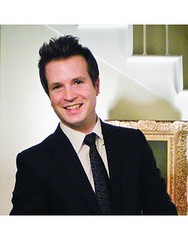 Steven R. Roach, 32, is the new editor of Coin World, effective May 1.
Steven R. Roach, 32, is the new editor of Coin World, effective May 1.
Roach is the fourth editor to lead the editorial staff in the 52-year history of the numismatic hobby's leading publication. He replaces Beth Deisher, whose retirement is effective April 30, culminating 27 years as editor and 31 years with Coin World.
Steve Collins, vice president, operations, of Amos Hobby Publishing, announced Roach's promotion April 23. He said: "The same forces of innovation and globalization that have reshaped business are now transforming our niche publishing area and Coin World's future will see rapid change in the way content is published and disseminated. These are exciting times in publishing and with Steve as editor we are committed to keeping Coin World flexible, innovative, and open to the very best and most productive ideas."
Roach began regularly writing for Coin World as a monthly columnist in 2006 and joined the staff full time in 2009 as associate editor. "I've been reading Coin World since I was a 10-year-old coin collector, so to now lead the publication as it expands its reach and influence through new media channels is tremendously exciting," Roach said.
During the past three years he has led the Coin Values pricing analyst team and has written the weekly Market Analysis column. In addition, he has covered legislative and legal issues, including daily coverage of the Langbord 1933 Saint-Gaudens double eagle trial in July 2011.
To read the complete article, see: Steven R. Roach selected as next editor of Coin World (www.coinworld.com/articles/steven-r-roach-selected-as-next-editor-of-coi/)
ON FINDING ERRORS IN NUMISMATIC PUBLICATIONS
Mr. Zielinski's criticisms of the Redbook would have been better directed, in private, directly to the Redbook's editors rather than being published, with what appears to be childish glee, in a third-party forum. I thank you for giving Dennis Tucker an opportunity to respond to them.
Of course the Redbook has errors in it. Any book with that much information will have some errors in it. Type happens.
I have been (quietly) offering corrections, suggestions and other input to the Redbook since the days when I worked for Coin World in the mid-1970's. I would hope that anybody else with the same would do so as well, but with discretion."
To read the earlier E-Sylum article, see: ZIELINSKI REPORTS ERRORS IN THE 2013 RED BOOK (www.coinbooks.org/esylum_v15n17a06.html)
THE MONEYER OF ST. GEORGES DE BOSCHERVILLE
Regarding the image on Kolbe & Fanning's Buy or Bid Sale No. 1, last week I asked, "Who is that funky dancing moneyer on the sale cover? Who can tell us where the image came from?".
I think the source of the illustration is 12th C, Normandy (France) at St. Georges de Bocherville. Dr. Paul Bedoukian used it an article he wrote several decades ago.
Andy Singer writes:
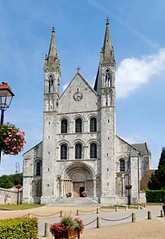 The "funky dancing moneyer" on the Kolbe and Fanning sale cover is an engraving of an 11th century stone capital from the Norman Abbey of St. Georges de Boscherville showing a moneyer at work. The sculpture decorates the corner of the capital against a background of acanthus and is not as two dimensional as the engraving depicts. A full page photograph can be found facing page 61 in John Porteous, Coins in History (1969).
The "funky dancing moneyer" on the Kolbe and Fanning sale cover is an engraving of an 11th century stone capital from the Norman Abbey of St. Georges de Boscherville showing a moneyer at work. The sculpture decorates the corner of the capital against a background of acanthus and is not as two dimensional as the engraving depicts. A full page photograph can be found facing page 61 in John Porteous, Coins in History (1969).
Wow. David and I both pronounced these answers "Impressive!". E-Sylum readers are an awesome bunch. I was also able to find an image of the stone capital opposite p37 in the 1973 edition of Porteus' Coins.
To read the earlier E-Sylum article, see: REMINDER: KOLBE & FANNING BUY OR BID SALE CLOSES MAY 9, 2012 (www.coinbooks.org/esylum_v15n17a02.html)
MORE ON LONGINES SYMPHONETTE MEDALS
Regarding Dick Johnson's question about Longines Symphonette medals, David Klinger writes:Last month I opened a box full of medals I had accumulated in the 1960-75 timeframe. Included was a partial set (28) of the Longines Symphonette Great American Triumphs medals. They were purchased by my Uncle Elmer Reed on a monthly subscription basis in 1971 and 1972. They came in two-medal boxes
Data included the following:
- Mintage: 5,000 (my set is marked P 696 on edge).
- Composition: produced in both 99.99% silver, and 92.5% sterling silver. (mine are edge marked sterling)
- Size 39mm - slightly larger than a silver dollar.
- Weight: 34 grams (1.109 ASW)
I don't know if this helps. I discarded the paperwork which came with the medals keeping only these notes and one of the boxes. I transferred the medals to one of my many coin cabinets. I never thought much of these types of issues. However, these are attractive, and well executed medals.
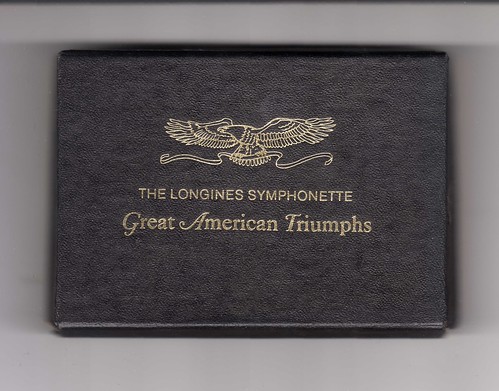
To read the earlier E=Sylum article, see: QUERY: INFORMATION ON LONGINES WITTNAUER MEDALS SOUGHT (www.coinbooks.org/esylum_v15n17a14.html)
BOSCO ON THE SCHULMAN MEDALLIC HISTORY OF MONEY AND BANKING
Paul J. Bosco submitted these thoughts on the earlier question about the Schulman Coin & Mint's "History of Money and Banking" set. Sorry for the delay in publishing this - we had an email snafu. Thanks! This is great background information. -Editor
 Schulman Coin & Mint's "History of Money and Banking" set. These were struck by the Franklin Mint They used to sell pieces to their collectors, but as this was a purely commercial venture, it is almost certain that Schulman was the only source for the pieces. I am virtually certain they were only regularly issued in silver.
Schulman Coin & Mint's "History of Money and Banking" set. These were struck by the Franklin Mint They used to sell pieces to their collectors, but as this was a purely commercial venture, it is almost certain that Schulman was the only source for the pieces. I am virtually certain they were only regularly issued in silver.
SC&M was a publicly traded firm. Hans Schulman hooked up with a stockbroker, Jed L. Hamburger, who had a corporate shell, Astrodyne, a planned hamburger/fast-food joint franchise operation on Long Island. Well, plans are not the same as a company, so Schulman and Hamburg "married", the one getting an actual company and the other getting working capital.
The main part of the business was rare coin auctions. Not long after a 1913 nickel was auctioned for a world record $45,000, Schulman announced he had realized $46,000 for a Russian Constantine Ruble, in a mail bid(!!!) auction. As it happens, Bernth Ahlstrom told me he bought the coin, taking it away from the legendary California collector Irving Goodman, but in the mid-1960s many assumed Hans had set an "arranged world record".
The History of Money and Banking set of twelve medals was as interesting as it sounds. Franklin Mint was then making big bucks selling sets of medals with equally dull themes like Presidents, states, flags, cars...Somehow, they were successful marketers.
By way of contrast, SC&M put almost all their marketing budget on one number on the roulette wheel. They paid to have an insert in the monthly bill of American Express, eschewing the chance to first do a test run utilizing only a small part of the AmEx mailing list. I think they reached about 2,000,000 AmEx customers. They got 123 orders --about six 10,000ths of a per cent-- beginning a slow but inexorable descent into bankruptcy. Even the mid-1975 hiring of Paul Bosco as mail clerk/staff numismatist was not enough to save the company, the final bell tolling in January '77.
Offerings of the medals appeared toward the back of several SC&M auction catalogs, the last dating to early 1975. They were not in inventory when I worked there. Years later I bought a set from a walk-up at a coin show. I sold it to my boss at SC&M, the late Gerry Baumann.
Gerry is probably best known from his years at MTB (Manfra, Tordella & Brookes, Inc - Editor). He once bought a P-mint Paquet $20 for $660,000 and sold it a couple months later for $1.1 million. The $20 is the rarer item, but the Hist-Money-Banking set is the only one I've encountered, and I absolutely MUST be the dealer most likely to encounter this set.
Although nearly unobtainable, the set is probably worth melt value today, very roughly $300.
If I am encouraged by enough E-Sylum readers, I will write more about the history of the Schulman firm and its colorful numismatists, probably on my own blog.
To read the earlier E-Sylum articles, see:
QUERY: SCHULMAN MEDALLIC HISTORY OF MONEY AND BANKING
(www.coinbooks.org/esylum_v15n14a15.html)
MORE ON THE SCHULMAN MEDALLIC HISTORY OF MONEY AND BANKING
(www.coinbooks.org/esylum_v15n15a12.html)
QUERY: FRANKLIN MINT PHILIPPINE ISSUES
I have been collecting various foreign coins, and in particular Philippine coins, including the various Franklin Mint Coins of the Realm series coins. I have managed to glean some bits from the Krause catalogs (both World Coins and Franklin Mint) as well as from purchases made (mostly through eBay) regarding the 1975-1982 period in which the Franklin Mint provided all the proof issues of Philippine coinage. I have a few questions, all pertaining to their Philippine issues:
1) I note that each coin was struck in three varieties in 1975-1977 (proof (P), matte (M), and brilliant uncirculated (U)), and thereafter apparently only in proof and brilliant uncirculated. Why did the matte version cease after 1977?
2) In 1974, the proof set for the Philippines was struck by the US Mint in San Francisco; what made someone at the Philippines decide to go with the Franklin Mint for their proof issues starting 1975?
3) Large mintages are listed for the matte coins of 1975-1977 and brilliant uncirculated coins of 1978-1981, but these coins are only most rarely seen for sale, in contrast to the much more commonly available (though smaller mintage) proofs. Were non-purchased coins of these types melted at the mint, dumped into circulation, gradually sold off, or sold and then mostly melted down by others?
4) Krause catalog lists proof Franklin Mint coins for 1982, but provides no mintages other than for the 50 Piso. How many of the proof sets were made?
5) Krause catalog does not list any brilliant uncirculated coins for 1982 except for the 50 Piso, however in recent months I have found what likely could be a (U) version of the 5 Sentimo (there is some slight wear, so it could be some strange sort of damaged proof) and what is unassailably a (U) version of the 5 Piso. So there must have been some of these made. But how many?
6) The proof coins were contained in hard transparent plastic containers, and the brilliant uncirculated coins in some sort of softer plastic container, but in what form did the matte coins get sold?
7) I have conjectured with (I think)) some justification that the reason there is no Franklin Mint 50 Piso coin for 1980 is that it was supposed to be for the visit of John Paul II to the Philippines, and which was delayed, so the coin was instead dated 1981 and included in the 1981 offerings. The gold counterpart minted in Germany exists for both years. But why is the 1982 Marcos/Reagan 25 Piso commemorative not struck by the Franklin Mint? And who struck it?
8) In 1983, the proof set for the Philippines was struck by the British Royal Mint in Wales, but in the same (U) and (P) versions as had been struck by the Franklin Mint up until that point; what made someone at the Philippines decide to go with another mint starting 1983?
9) After 1982, the Franklin Mint made the 1986 Aquino/Reagan 25 Piso commemorative in silver and a 2500 Piso coin (sans their distinctive "f" mintmark) in gold commemorating the same. Were any other Philippine coins struck by the Franklin Mint after 1982?
DICK JOHNSON'S ADVICE FOR FRANKLIN MINT CUSTOMERS
Financial advisor Malcom Berko, whose column is published in the Illinois Herald newspaper, answered a sad letter this week from "DA" apparently in the Detroit area. He had purchased $47,000 worth of Franklin Mint coins and medals and now wishes to sell them. He took them to a "coin dealer" who offered him only $2,500 for the lot. He called two other coin dealers in the Detroit area with even less encouragement -- they stated the coins and medals were "worthless."
Berko first states his correspondent could sue Franklin Mint for misleading statements about their products. While DA bought Franklin Mint's hype it is unlikely he could recover anything for such sales statements. I am certain the original language was legally cleared before publication.
Berko continues with a rant about his own personal experience with a die-cast car made in China he bought from Franklin Mint that fell apart after he received it. This has undoubtedly influenced his further response. He stated DA overpaid for these items and he has been "snookered and there is no chance for recovery."
Pull out the silver items and go back to the same coin dealers was his recommendation. Worst possible advice.
This entire response is filled with misinformation. Like "I don't know of a single item produced by the Franklin Mint that can be sold today for its original cost." How can he be so wrong! A Boy Scout medal series by Norman Rockwell sells at the greatest premium over original cost to my knowledge.
First DA took the lot to a "coin dealer." Most coin dealers do not deal in Franklin Mint material. He should have found a dealer specializing in FM material - not a local coin dealer.
Next he must realize what sells on the medal market. It is by topical interest. Here he will have to break up those many sets. Offer individual medals for sale (as on eBay). Buyers want one or two medals from a set or series.. Silver medals which do not sell individually can be sold for silver content. The remainder can then be sold wholesale.
Those Franklin Mint coins and medals were top quality (unlike Berko's die-cast car from China). These were originally purchased at perhaps three times silver value (not five times Berko claims). There is a secondary market for some of these items. A seller has to make the effort to find how best to reach that market.
Disregard any advice in this reply:
Coin purchases don't live up to claims
(heraldnews.suntimes.com/business/berko/12126832-420/
coin-purchases-dont-live-up-to-claims.html)
NOTES FROM E-SYLUM READERS: APRIL 29, 2012
Postage and Fractional Currency
Peter Huntoon writes:
I sincerely appreciate the essay Jerry Fochtman submitted concerning Civil War money with emphasis on postage and fractional currency. I found the link to Chittenden's contemporary article particularly valuable.

Joe Boling adds:
The purchase of postage currency at a premium by merchants is exactly parallel to the situation in India today, where merchants have to buy small change coins at a premium to satisfy requirements in commerce. The mint insists that there is no shortage of small-denomination coins, but some merchant guilds are now striking tokens to use for making change - the mint is obviously not satisfying the need.
To read the earlier E-Sylum article, see: PREMIUMS PAID FOR POSTAGE AND FRACTIONAL CURRENCY (www.coinbooks.org/esylum_v15n17a12.html)
Bosco on Numismatic Gossip
Paul J. Bosco writes:
I disagree with Charlie Davis about the Alan Weinberg recounting of his besting of Jack Collins and John Ford. Just because it is gossip does not mean it is not information, and I for one am glad to see this revelatory numismatic vignette get printed. I would even say it had a happy ending. Weinberg, as usual, was most concerned about acquiring a great piece. Others were more concerned about not have to pay "all the money" to some old lady.
Mind you, I thought Jack was a prince. Once I bought for him, from a Glendining's (London) auction, a Washington "Voltaire" medal which, on receipt, Jack called the finest example known to him. Another time I sold him a great run of small brass 1932 Washington medals, pedigreed to the time of issue, for an average price in the upper single digit. A great collector, Jack --as was Ford. So is Weinberg. This inside account of their head-knocking is the kind of story that make the e-Sylum special.
To read the earlier E-Sylum article, see: ALAN WEINBERG RECALLS JACK COLLINS (www.coinbooks.org/esylum_v15n13a05.html)
On another numismatist, Paul adds:
I was a bit shocked to learn about Steve Pellegrini's passing
To read the earlier E-Sylum article, see: STEPHEN L. PELLEGRINI (www.coinbooks.org/esylum_v15n14a04.html)
Shakespeare's Shove-Groat Shilling
Andy Singer writes:
The article on Shakespearean Numismatics caught my attention. There is a small book listing all of the numismatic references in Shakespeare's plays: J. Eric Engstrom, Coins in Shakespeare: A Numismatic Guide (Hanover, New Hampshire: Dartmouth College Museum Publications, 1964). There are both hardback and paperback editions. I just had reason to use this last month after buying a "shove-groat shilling".
To read the earlier E-Sylum article, see: SHAKESPEAREAN NUMISMATICS AT THE BRITISH MUSEUM (www.coinbooks.org/esylum_v15n17a10.html)
More on Palestine Numismatics
Regarding Scott Barman's question on references about the numismatics of Palestine, Jim Duncan of New Zealand writes:
Fred Pridmore provides data in book two of his "The British Commonwealth of Nations".
To read the earlier E-Sylum article, see: QUERY: LITERATURE ON PALESTINIAN NUMISMATICS (www.coinbooks.org/esylum_v15n17a11.html)
Corrections to the April 22, 2012 Issue
Ken Spindler noticed my ham-handed editing of the article about Canadian coin technology. So did our webmaster Bruce Perdue, who fixed the problems before posting the issue on our web archive. Thanks!
To read the earlier E-Sylum article, see: CANADA INTRODUCES NEW COIN TECHNOLOGY (www.coinbooks.org/esylum_v15n17a20.html)
Ken also noticed the typo in Tom Fort's note, which read: " The cheque paid to Superman's creators Jerry Siegel and Joe Schuster for the rights to their creation sold at auction for $160.00."
Of course, that was supposed to read "$160,000" not $160.00". Sorry I forgot to fix that one. At least I got the headline straight!
To read the earlier E-Sylum article, see: NOTES FROM E-SYLUM READERS: APRIL 22, 2012 (www.coinbooks.org/esylum_v15n17a16.html)
Sri Lanka Scout Centenary Coin
Kavan Ratnatunga forwarded links relating to a new Sri Lanka Scout centenary coin. He writes:
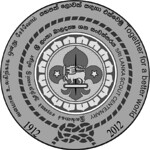 Sunday Times Plus Section 2012 Apr 29th
See
www.sundaytimes.lk/120429/Plus/plus_13.html
.
Sunday Times Plus Section 2012 Apr 29th
See
www.sundaytimes.lk/120429/Plus/plus_13.html
.
See also page for it on my website. coins.lakdiva.org/commemorative/2012_scout100_2r.html .
George Washington's Acts of Congress
Here's an item I found interesting this week, and there is a numismatic connection.
The early Acts of Congress include all of the important legislation authorizing the United States Mint and establishing the U.S. coinage system. How's this for a provenance! It will be interesting to see what this copy brings at auction.
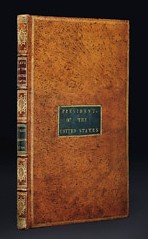 On June 22, Christie's New York will offer one of the most evocative and revealing American historical artifacts: George Washington's personal copy of the Acts of Congress, including the Constitution and draft Bill of Rights, a volume specially printed and bound for him in 1789, his first year in office as first President of the United States (estimate: $2-3 million). It is in near-pristine condition, after 223 years. On the cover, "President of the United States" is embossed in gold. On the marbled endpaper is Washington's personal bookplate, engraved with his motto, Exitus acta probat. Washington added to the title-page a bold signature "G˚: Washington."
On June 22, Christie's New York will offer one of the most evocative and revealing American historical artifacts: George Washington's personal copy of the Acts of Congress, including the Constitution and draft Bill of Rights, a volume specially printed and bound for him in 1789, his first year in office as first President of the United States (estimate: $2-3 million). It is in near-pristine condition, after 223 years. On the cover, "President of the United States" is embossed in gold. On the marbled endpaper is Washington's personal bookplate, engraved with his motto, Exitus acta probat. Washington added to the title-page a bold signature "G˚: Washington."
Remarkably, in the margins of the Constitution, Washington has added careful brackets and marginal notes. These notations highlight key passages concerning the President's responsibilities, testifying to Washington's careful, conscientious approach to his powers and responsibilities in his ground-breaking first term. This elegant, slim volume epitomizes Washington's multiple, indispensable roles in the creation of the nation. As he affirmed at his first inaugural, in April 1789, "I was summoned by my country, whose voice I can never hear but with veneration and love."
It was printed and bound especially for the president by a New York bookbinder, Thomas Allen, who created two similar volumes for the first Secretary of State, Thomas Jefferson, and Attorney General John Jay. Jefferson's copy is in the Lilly Library in Indiana, and Jay's is in a private collection. Washington's copy of the Acts of Congress remained in the library at Mount Vernon for many years after Washington's death in 1799, but in 1876, many of his books, including this volume, was sold at auction.
On Wearing Cotton Gloves
Kay O. Freeman writes:
BBC News America had a TV segment on British Library acquiring St. Cuthbert's Gospel which The E-Sylum mentioned last week. It surprised me that the librarian was handling the book and turning pages with bare hands -without wearing cotton gloves for protection. I thought that gloves were standard procedure for rare books - and coins?
To read the earlier E-Sylum article, see: NOTES FROM E-SYLUM READERS: APRIL 22, 2012 (www.coinbooks.org/esylum_v15n17a16.html)
Yap Stone Money Cartoon
Dick Hanscom forwarded this cartoon found in the Fairbanks Daily News Miner this week.
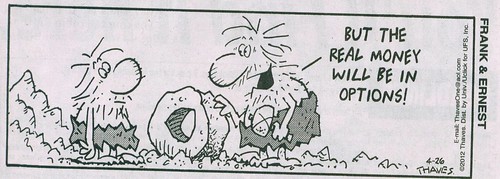
Dick adds:
Maybe I am dense, but I don't know how it could be amusing if you didn't know about Yap stone money
QUERY: U.S. MINT MEDAL IMAGES SOUGHT
We're working on a book here at Whitman, to be published later this year, and I need some high-resolution (print-resolution) images of certain U.S. Mint medals. They can be scans or photographs, as long as they're at least 300 dpi at 2x actual size.
I'd like to get the word out in the cyberpages of The E-Sylum. Anyone who can contribute images will be acknowledged in the book's credits.
- J. Edgar Hoover, reverse
- Second U.S. Mint, obverse
- U.S. Mint Director Stella Hackel, reverse
- Hubert Humphrey, obverse
- Queen Beatrix of the Netherlands, reverse
- Secretary of the Treasury Donald Regan, reverse
- Fred Waring Congressional Gold Medal, obverse
- Louis Armstrong American Arts gold bullion, obverse
- Louis Armstrong American Arts gold bullion, reverse
- Helen Hayes American Arts gold bullion, obverse
- Helen Hayes American Arts gold bullion, reverse
- Leo J. Ryan Congressional Gold Medal, reverse
- Mint set filler token, obverse
- President Harry Truman Congressional Gold Medal, reverse
- John Steinbeck American Arts gold bullion, obverse
- John Steinbeck American Arts gold bullion, reverse
- Mary Lasker Congressional Gold Medal, reverse
- President George H.W. Bush inaugural medal, obverse
- General Norman Schwarzkopf Congressional Gold Medal, obverse
- U.S. Mint Director David J. Ryder, reverse
- Persian Gulf War, reverse
- Congressional Award, reverse
- Rabbi Menachem Schneerson Congressional Gold Medal, obverse
- U.S. Mint Director Philip Diehl, obverse
- Frank Sinatra Congressional Gold Medal, obverse
- U.S. Mint Service Award pin, obverse
- Little Rock Nine Congressional Gold Medal, reverse
- John Cardinal O'Connor Congressional Gold Medal, obverse
- Bicentennial of the White House, obverse
- Ronald and Nancy Reagan Congressional Gold Medal, obverse
- General Henry H. Shelton Congressional Gold Medal, reverse
- Dr. Dorothy I. Height Congressional Gold Medal, reverse
- Jackie Robinson Congressional Gold Medal, reverse
- Fish and Wildlife "Centennial of the National Wildlife Refuge System" medal, salmon reverse
I can be contacted by email at dennis.tucker@whitmanbooks.com
QUERY: DID LOUISE SPARROW SCULPT THIS WASHINGTON PLAQUE?
Ron Ward writes:
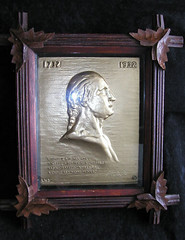 I don't have the book "Monograms of American Coin & Medal Artists" and was wondering whether LKS is listed. I recently purchased a beautiful George Washington plaque (bearing the dates 1732-1932) with the above initials in the lower left corner. After doing a web search I determined they were the initials of Louise Kidder Sparrow (1884-1979) who among other things was noted for her plaques and poetry.
I don't have the book "Monograms of American Coin & Medal Artists" and was wondering whether LKS is listed. I recently purchased a beautiful George Washington plaque (bearing the dates 1732-1932) with the above initials in the lower left corner. After doing a web search I determined they were the initials of Louise Kidder Sparrow (1884-1979) who among other things was noted for her plaques and poetry.
THE BOOK BAZARRE
AN ALASKA PURCHASE TREASURY WARRANT
Kerry Rodgers writes:
Concerning the price of checks, I wonder what this one would command if offered at auction?
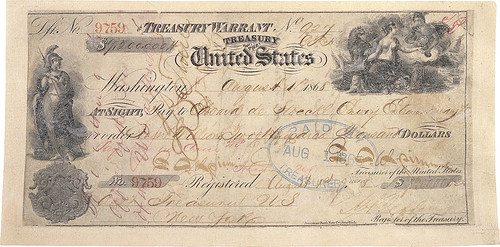
With this check, the United States completed the purchase of almost 600,000 square miles of land from the Russian Government. This treasury warrant issued on August 1, 1868, at the Sub-Treasury Building at 26 Wal, New York, New York, transferred $7.2 million to Russian Minister to the United States Edouard de Stoeckl. The purchase price of the 49th state? Less than two cents an acre. Original located in the National Archives, Records of the Accounting Officers of the Department of Treasury.
To read the complete article, see: Alaska Purchase (commons.wikimedia.org/wiki/File:Alaska_Purchase_%28hi-res%29.jpg?uselang=en-gb)
QUERY: SCOTTISH AGRICULTURAL MEDAL INFORMATION SOUGHT
W.J. Elvin III writes:
I wonder if anyone could point me toward information on the internet or in print on Scottish agricultural medals? I have not had much luck, and no response from dealers who looked as though they might have knowledge. Even information on British agricultural medals in general would provide a starting point, any ideas welcome. Thanks for any assistance.
Christopher Eimer writes:
The only thing that I can think of at present is an auction catalogue source rather than a published reference, and for this I would suggest W.J. Elvin going to the Coin and Medal archive section of the auctioneers Dix Noonan Webb ( www.dnw.co.uk and looking at Special Collections and in particular those of Norman Brodie and James Spencer.
In each instance, several auctions took place, so WJE will have to find the appropriate auction for the items in question, which means ploughing through (no pun intended) the material until the relevant section is found, but this I think currently represents the best groupings of such material and thus the best opportunity of any such information.
THE BRONX COIN CLUB
There have been two recent posts mentioning the Bronx Coin Club (including the memoirs of Harvey Stack), which imply that that club is defunct, although The E-Sylum earlier published a good photograph taken by George Cuhaj showing Gordon Frost at the Bronx Coin Club. I am happy to be able to say that it is very much alive, as are a number of other New York area clubs that were alleged to be defunct (the New Jersey Numismatic Society, the Westchester County Coin Club, the Long Island Coin Club).
The Bronx Coin Club was established in1933 by the greatly admired Otto Sghia. It used to meet at the Concourse Plaza Hotel in the Bronx, but since 1960 it has met at various locations in Manhattan; for many years it met at Rosoff's Restaurant in the garment district, where members always commented on the saltiness of the matzoh ball soup.
In recent years it has adopted the practice of holding at least one meeting a year in the Bronx. Its recent presidents are Edward Janis, Robert Schonwalter, Jay Galst, Gordon Frost and the current president, Normand Pepin; I myself, a member for nearly two decades, have the honor of serving on the Board of Governors.
Its membership heavily overlaps with that of the New York Numismatic Club, but not entirely; and there are a number of members of both clubs who prefer the informal and very lively meetings at the Bronx club to the stricter agenda of its larger sibling. (The meetings are admittedly not as lively as some clubs; at one meeting of the now defunct Israel Numismatic Society of New York Ed Janis got into a punch up with another member.)
The attendance is less than the New York Club (usually about eight, rather than twenty-six), but the exhibits are of equally high quality, and there is no better place for numismatic gossip. The club has two topics a month: a special topic, often rather quirky (the best topics were those proposed for several years in the 1990s by Bill Kable), plus a letter of the alphabet; some letters, notably X, can be a bit tricky, although I once brought Notgeld from Xions in Posen (birthplace of the Jewish historian Heinrich Graetz).
THE BOOK BAZARRE
NANOTECHNOLOGY FOR BANKNOTE SECURITY
 "Most passive RFID tags don't have an integrated power source and they receive their power from a radio signal," Husam Alshareef, an associate professor in material science and engineering at King Abdullah University of Science & Technology in Saudi Arabia, explains to Nanowerk. "This means they cannot always perform a memory refresh operation. For applications in banknotes this means the memory used in RFIDs should be non-volatile and rewritable in order to effectively complement logic and sensing elements to provide the desired circuit functionality. Further it should be cheap, flexible, robust and have good retention properties. And fabricating such memory devices on banknotes has been the biggest hurdle so far."
"Most passive RFID tags don't have an integrated power source and they receive their power from a radio signal," Husam Alshareef, an associate professor in material science and engineering at King Abdullah University of Science & Technology in Saudi Arabia, explains to Nanowerk. "This means they cannot always perform a memory refresh operation. For applications in banknotes this means the memory used in RFIDs should be non-volatile and rewritable in order to effectively complement logic and sensing elements to provide the desired circuit functionality. Further it should be cheap, flexible, robust and have good retention properties. And fabricating such memory devices on banknotes has been the biggest hurdle so far."
In recent work, Alshareef and his group have now fabricated the first-ever all-polymer, non-volatile, ferroelectric memory on banknotes.
"A major challenge with using banknotes is their rough fibrous surface, which necessitates adding a planarization layer to render the surface amenable to electrode and active layer deposition," says Alshareef. "We overcame this problem by applying a planarizing layer of polydimethylsiloxane (PDMS). In addition to acting as the planarizing layer PDMS provides other important roles such as providing adhesion and strain isolation for the devices above. A key feature of PDMS layer is that it penetrates deep into the fibers of substrates such as banknotes, thus providing strong adhesion without chemical bonding."
Alshareef notes that the performance of their banknote tags is comparable to previous records of pentacene-based ferroelectric transistors on other substrates such as silicon and plastic.
The relevance for the banknote security industry is that these results suggest that the fabrication of high performance non-volatile polymer memories on banknotes is possible – albeit not practical yet.
Alshareef cautions that, in order to make organic electronics on banknotes commercially viable, much work still needs to be done in optimizing printing techniques, improving mechanical integrity, and devising appropriate encapsulation layers.
To read the complete article, see: Improving banknote security with organic electronics (www.nanowerk.com/spotlight/spotid=24982.php)
MORE ON CANADA'S NEW COIN SECURITY TECHNOLOGY
Perhaps the most tantalizing aspect of the new coinage, and the area that could be the most misunderstood, is a patented process that has been branded as Digital Non-Reactive Activation.
The DNA process reads or "gives" the coin a signature that has the uniqueness similar to cellular DNA so that, if the RCM desired, the coin could be traced to the die it was made from and the time and date it was made.
Peter Ho, RCM executive director, told Coin World in Berlin that the algorithm has multiple points of data so that a damaged coin could still be recognized when it is scanned, and that new data would override earlier data.
According to Truong, the RCM subjected registered coins to a lengthy wear test to see how the process held up, placing coins in tumblers for many days, taking them out at various stages. "We tested it extensively, where the coin was so damaged it does not look like any coin that is in circulation, and it recognized it," he said.
The DNA technology can be applied to previously struck coins and can thus be employed for coins that are in museum or institutional collections, for instance. "A collector who loans out their coins to museums wants to make sure he gets them back," Ho said.
"It's going to explode – it's going to come fast," Ho said. Once the system is implemented, an individual will be able to take a picture of a coin with a phone to determine whether it is genuine, Ho said, illustrating the process by pulling out a smart phone and snapping a picture. "A shopkeeper can use this. "
To read the complete article, see: Canada introduces newest coin technology (www.coinworld.com/articles/canada-introduces-newest-coin-technology/)
ARTICLE: SHOULD BRITAIN ELIMINATE THE PENNY?
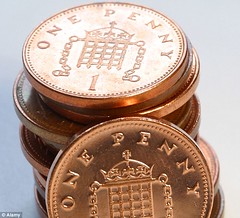 As a unit of currency it may not be worth much, but do we really want to bid it farewell? We've long since seen
the demise of the farthing and the much–loved 12–sided threepenny bit, but now there's a campaign to
consign the penny to history, too.
As a unit of currency it may not be worth much, but do we really want to bid it farewell? We've long since seen
the demise of the farthing and the much–loved 12–sided threepenny bit, but now there's a campaign to
consign the penny to history, too.
No matter that there are more than 11 billion in circulation, a growing number of Britons think we can do without one of the oldest coins in our history. Canada has already ditched its cent (known as a penny) – following similar moves in Australia and New Zealand to abolish their low–denomination coins.
With the U.S. and Russia toying with the idea of doing away with fiddly cents and kopeks (one–hundredth of a rouble and the equivalent of our penny), should we follow suit?
On the other side of the argument are the coin conservationists led by Katie Eagleton, curator of modern money at the British Museum, and Phil Mussell, director of Coin News, arbiter of all things numismatic.
Mr Mussell says that every penny costs just 0.3p to produce and is therefore still economically viable. And if you don't want it cluttering up your life, what's stopping you from giving it to charities, who would be glad to have it jangling in their tins.
However, in the anti-penny lobby is David Buik, of the City stockbroker BGC Partners, who says: 'After losing several hundred per cent of its value in the past two to three decades, the penny seems like a complete waste of time and space.'
The little coin dates back to the 8th century and the days of King Offa, the monarch who famously built a fortification separating England from Wales. He introduced Britain's first coinage since Roman occupation, basing it on a continental prototype.
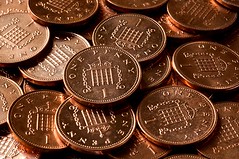 Offa's penny was not the familiar copper we know, but a much more glamorous affair made of pure silver. By the
13th century, there was even a gold penny in circulation.
Offa's penny was not the familiar copper we know, but a much more glamorous affair made of pure silver. By the
13th century, there was even a gold penny in circulation.
It was not until the 19th century that copper was used regularly to make pennies. They were so thick and heavy that they were known as cartwheels. By Queen's Victoria's time, the days of copper were over and pennies were made of bronze, with the Queen's head on one side and Britannia bearing a trident on the other. This coin, which was slightly larger than today's 2p piece, remained in currency until 1970.
To read the complete article, see:
GLENYS ROBERTS: Should we abolish the penny? Campaign to consign the coin to history is gaining currency
(www.thisismoney.co.uk/money/article-2133789/GLENYS-ROBERTS
-Should-abolish-penny-Campaign-consign-coin-history-gaining-currency.html)
ZIMBABWE'S SMALL CHANGE PROBLEM
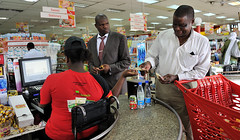 When Zimbabweans say they are waiting for change, they are usually talking about politics. After all, the country has had the same leader since 1980.
When Zimbabweans say they are waiting for change, they are usually talking about politics. After all, the country has had the same leader since 1980.
But these days, Robson Madzumbara spends a lot of time quite literally waiting around for change. Pocket change, that is. He waits for it at supermarkets, on the bus, at the vegetable stall he runs and just about anywhere he buys or sells anything.
"We never have enough change," he said, manning the vegetable stall he has run for the past two decades. "Change is a big problem in Zimbabwe."
For years, Zimbabwe was infamous for the opposite problem: mind-boggling inflation. Trips to the supermarket required ridiculous boxloads of cash. By January 2009, the country was churning out bills worth 100 trillion Zimbabwean dollars, which were soon so worthless they would not buy a loaf of bread (the notes now circulate on eBay, as gag gifts).
But since Zimbabwe started using the United States dollar as its currency in 2009, it has run into a surprising quandary. Once worth too little, money in Zimbabwe is now worth too much.
"For your average Zimbabwean, a dollar is a lot of money," said Tony Hawkins, an economist at the University of Zimbabwe.
Zimbabweans call it "the coin problem." Simply put, the country hardly has any. Coins are heavy, making them expensive to ship here. But in a nation where millions of people live on a dollar or two a day, trying to get every transaction to add up to a whole dollar has proved a national headache.
Zimbabweans have devised a variety of solutions to get around the change problem, none of them entirely satisfactory. At supermarkets, impulse purchases have become almost compulsory. When the total is less than a dollar, the customer is offered candy, a pen or matches to make up the difference. Some shops offer credit slips, a kind of scrip that has begun to circulate here.
Most countries that use the dollar get around this problem by minting local coins: Ecuador uses the dollar as legal tender but mints centavo coins. The government guarantees that anyone who wants to exchange 100 Ecuadorean centavos for a genuine United States dollar can do so.
But that requires confidence in the local government, something that is in even shorter supply here than coins. Zimbabweans say they want no legal tender issued by their government.
"I won't accept any Zimbabwean money," said Ms. Chikandiwa, the vegetable seller, who saw her life savings wiped out by hyperinflation. Back then, the value of the currency dropped so fast that prices for milk, cigarettes, sugar and flour would change by the hour, if not the minute. These days, Ms. Chikandiwa keeps all her earnings in cash, not trusting her precious dollars to the bank. "We can't trust these people," she said, referring to the government.
With single dollar bills in heavy rotation, they tend to suffer a lot of wear and tear. Many are filthy – almost black. Ms. Zhuwawu takes note of the cleanliness of the legal tender each customer hands her. Two-dollar bills, rare in the United States, circulate widely here.
Most people, she said, have a sense of humor about the problem. After all that Zimbabwe has been through, it is not that big a burden, she said. It is a give-and-take.
A man comes in to buy staples. A box is 30 cents; he has only a dollar. Her change drawer is empty.
"Just take it," Ms. Zhuwawu said. "It's your lucky day. Nothing is free in Zimbabwe."
To read the complete article, see:
Using U.S. Dollars, Zimbabwe Finds a Problem: No Change
(www.nytimes.com/2012/04/25/world/africa/using-us-dollars
-zimbabwe-finds-a-problem-no-change.html)
GALLIPOLI SERVICE MEDALS AT THE MARYBOROUGH MILITARY MUSEUM
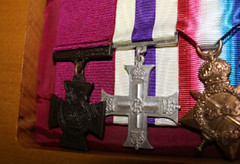 The Fraser Coast boats the nation's largest collection of Gallipoli service medals, including a Victoria Cross.
The Fraser Coast boats the nation's largest collection of Gallipoli service medals, including a Victoria Cross.
Allan Woodward, a director of the Maryborough Military Museum, said 'The Gallipoli room' holds the largest collection of medals awarded during the conflict in Australia. Mr Woodward said the collection has been a mission for the museum's owner, John Meyers.
"Particularly on the volume of medals on Gallipoli; of course the Australian war memorial does hold the nine Victoria Crosses awarded to Australians," said Mr Woodward, "but not the sheer number of medals of officers and men who served at Gallipoli."
The Victoria Cross on display is that of Major Herbert James, an English recipient of the gallantry medal. Mr Woodward said it was a formidable task for the museum to acquire a VC.
The museum is open Anzac Day, and is staffed by a team of almost 100 volunteers who keep the museum open every day of the week. Mr Woodward said volunteers are also involved in the maintenance of the museum's Ferret armoured car.
To read the complete article, see: Maryborough's piece of Gallipoli history (www.abc.net.au/local/stories/2012/04/24/3488086.htm)
THE GOZNAK MOSCOW MINT
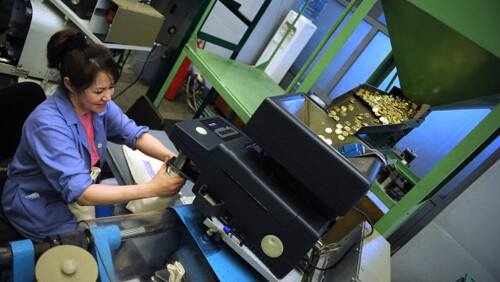
The Goznak Moscow Mint celebrates its 70th anniversary on April 25. It has played its part in all the major events of the second half of the 20th century.
In the post-war period, the mint issued medals and orders. In 1957, when Moscow was preparing to host the World Festival of Youth and Students, the mint received an order for the mass production of various types of commemorative badges. In 1975, the mint began production of commemorative coins for the 1980 Olympic Games. In 1983, the mint began producing token coins. Currently, its products range from limited edition commemorative coins, including those dedicated to the 2014 Olympics, to state decorations, souvenirs and much more.
The mint continues to have restricted access. Those lucky enough to get permission to enter the site have to go through a number of checks and leave all their change at the entrance. The majority of the staff changes into uniforms before entering the mint.
The floor where coins, medals and orders are produced takes up most of the plant. It is the main attraction for delegations and journalists. It's never quiet in the huge hangar. Special vehicles carry workpieces to coining presses and cart off 200-kilogram boxes filled with new coins. The staff is always eager to talk about the manufacturing process.
They say, for instance, that the smaller the coin the faster it is to produce. A coining press can produce 850 10-kopeck coins or 600 five-rouble coins a minute. Engineers monitor the operation of coining presses and bear responsibility for defective production. They cannot check every coin, of course, but they conduct random checks.
Mikhail Chertov has worked at the Moscow Mint for 48 years. He likes mentoring new workers and remembering the past.
"My hands have touched all these items at many stages, from die-cutting and annealing to the coining of orders, medals and decorations. There was so much work in those times and the work was always interesting," Chertov recalls. Awarded with the Order of Labor Glory, 2nd and 3rd class, Chertov was transferred from the pressing floor to the position of compression unit operator. Now he also does mentoring and shares his experience with apprentices. He compares coining to baking bread.
In his time at the mint, he has enjoyed working on orders most of all. He has made the Order of Lenin, the Order of Courage and the Order of the Red Banner. Even now, Chertov always watches state decoration awarding ceremonies on TV. "I don't want to boast but whenever I see an awarding ceremony my heart skips a beat because I am part of it," he admits.
The mint is now preparing for the 2014 Winter Olympic Games in Sochi. It is currently producing several types of commemorative coins, such as a 100-ruble gold bullion coin depicting a Leopard, an official mascot of the 22nd Winter Olympic Games.
To read the complete article, see: The Moscow Mint: From One Olympics to the Next (en.ria.ru/analysis/20120426/173055521.html)
EVERYDAY ART: THE BANKNOTE
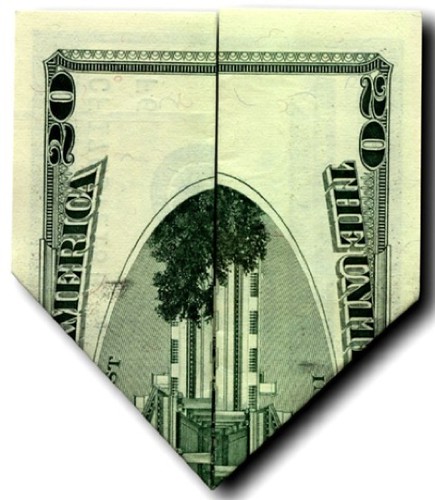
To read the complete article, see: Everyday art: The Banknote (www.varsity.co.uk/culture/4652)
THE FUTURE OF READING
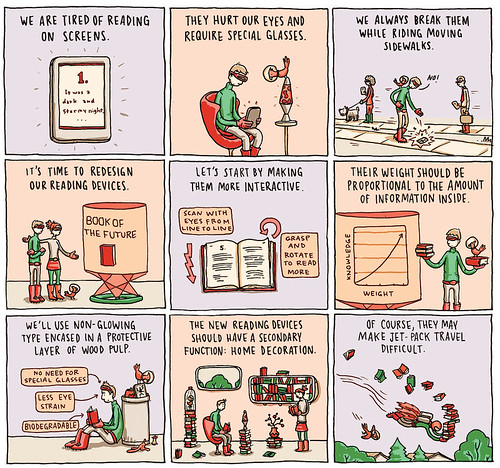
To read the complete article, see: The Book of the Future (www.nytimes.com/interactive/2012/03/30/books/review/snider01.html)
FEATURED WEB SITE: THE ULTIMATE STATE OF TÆDIVM
This week's Featured Web Site is owned by Chaim Shiboleth and catalogues the coin output of diverse European based micronations.The Ultimate State of Tædivm or "Confronting the Dire Consequences of Boredom in the Numismatic World…"
A Graphic Catalogue of Coins, Private Patterns, Medallic Issues & Banknotes from Unrecognised States, Micronations, Alternative Communities, Autonomy Movements, & Fantasy Locations, with an Emphasis on European issues and an extra section for the Private Pattern Antarctic Coins minted by F. Zinkann, esq.
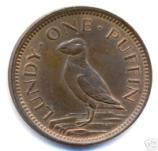
www.taedivm.org/micronations.html

